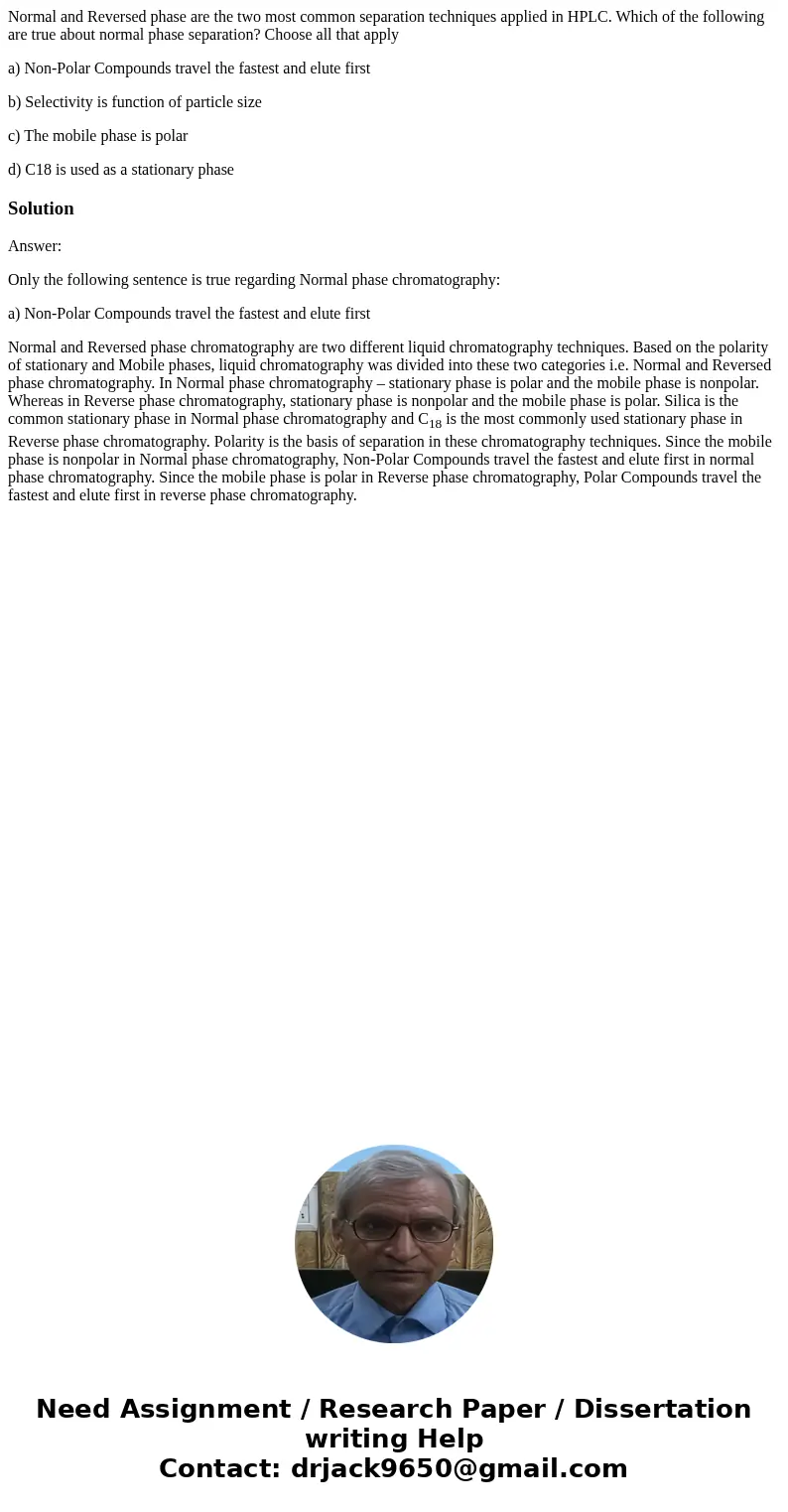Normal and Reversed phase are the two most common separation
Normal and Reversed phase are the two most common separation techniques applied in HPLC. Which of the following are true about normal phase separation? Choose all that apply
a) Non-Polar Compounds travel the fastest and elute first
b) Selectivity is function of particle size
c) The mobile phase is polar
d) C18 is used as a stationary phase
Solution
Answer:
Only the following sentence is true regarding Normal phase chromatography:
a) Non-Polar Compounds travel the fastest and elute first
Normal and Reversed phase chromatography are two different liquid chromatography techniques. Based on the polarity of stationary and Mobile phases, liquid chromatography was divided into these two categories i.e. Normal and Reversed phase chromatography. In Normal phase chromatography – stationary phase is polar and the mobile phase is nonpolar. Whereas in Reverse phase chromatography, stationary phase is nonpolar and the mobile phase is polar. Silica is the common stationary phase in Normal phase chromatography and C18 is the most commonly used stationary phase in Reverse phase chromatography. Polarity is the basis of separation in these chromatography techniques. Since the mobile phase is nonpolar in Normal phase chromatography, Non-Polar Compounds travel the fastest and elute first in normal phase chromatography. Since the mobile phase is polar in Reverse phase chromatography, Polar Compounds travel the fastest and elute first in reverse phase chromatography.

 Homework Sourse
Homework Sourse